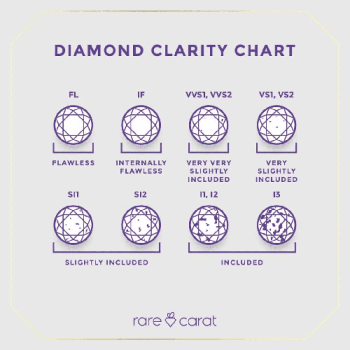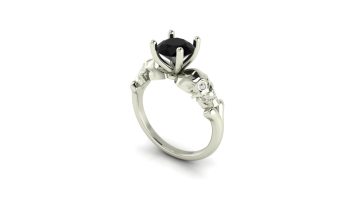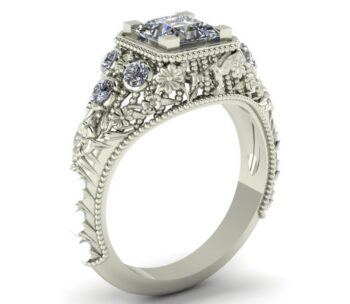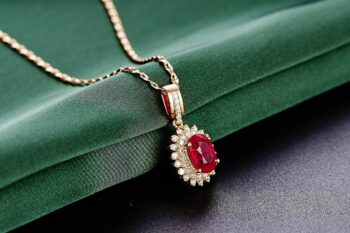A Discussion Of Jewelry Materials
Before we got into jewelry, we knew nothing about it. At all. So, we totally get it when our customers have questions about Jewelry Materials. There are enough options that it can be overwhelming, especially when the customer is giving something as a gift. In this article, we will break down the metals we use in making fine jewelry. We will also discuss the pros and cons, as well as their properties.
Jewelry Materials – Alloyed Metals
When it comes to jewelry making, there are a variety of metals that are commonly used. One of the most popular choices is gold, which is known for its beauty and durability. Another common metal used in jewelry making is silver, which has a timeless appeal. Additionally, platinum is often used for its strength and resistance to tarnish. These metals not only make for stunning pieces of jewelry, but they also hold their value over time. So, whether you’re looking for a classic gold necklace or a sleek silver bracelet, there are plenty of options to choose from when it comes to jewelry made from these allowed metals.
However, these metals are rarely or never used in their pure form. Gold is too soft to be made into 24K jewelry. Pure silver and platinum are not optimal either. So, they are alloyed, or mixed, with other metals to give them certain characteristics. These would be hardness, durability, and color.
Alloyed metals are widely used in jewelry making for their unique properties and aesthetic appeal. One popular alloy is sterling silver, which combines silver with other metals to enhance its durability and resistance to tarnish. Another commonly used alloy is white gold, which is made by mixing gold with other metals such as nickel or palladium. Finally, there’s rose gold, a charming alloy made by combining gold with copper. In our opinion, these alloyed metals offer many options for creating beautiful and long-lasting jewelry pieces.
Jewelry Materials – Sterling Silver
Sterling silver is a popular choice for jewelry making due to its durability and beautiful appearance. It is an alloy made up of 92.5% silver and 7.5% other metals, usually copper. This combination gives sterling silver its strength while still maintaining its lustrous shine.
One of the main advantages of using sterling silver in jewelry making is its affordability. Compared to other precious metals like gold or platinum, sterling silver offers a more budget-friendly option without compromising on quality. It allows jewelry makers to create stunning pieces that are accessible to a wider range of customers.
Another benefit of sterling silver is its versatility. It can be easily shaped and molded into intricate designs, making it ideal for creating unique and eye-catching jewelry. Whether it’s delicate earrings, statement necklaces, or elegant rings, sterling silver can be crafted into various styles to suit different tastes and preferences.
However, it’s important to note that sterling silver does have a few drawbacks. One of the main cons is that it can tarnish over time. This is due to the presence of copper in the alloy, which reacts with air and moisture. Regular cleaning and proper storage can help prevent tarnishing, but it’s something to keep in mind when using sterling silver in jewelry making.
Additionally, some people may have allergic reactions to sterling silver. While it is generally considered hypoallergenic, individuals with sensitive skin may experience irritation or discoloration when wearing sterling silver jewelry. It’s always a good idea to test for any potential allergies before wearing or purchasing sterling silver pieces.
In conclusion, sterling silver is a popular choice for jewelry making due to its affordability, versatility, and durability. While it may require some maintenance to prevent tarnishing, its overall benefits make it a great option for creating beautiful and accessible jewelry.
Jewelry Materials – Argentium Silver
Argentium silver is a modern type of silver alloy that contains a higher percentage of pure silver compared to traditional sterling silver. It is known for its superior tarnish resistance, making it a popular choice for jewelry making.
One of the main pros of using argentium silver in jewelry making is its low maintenance. Unlike traditional sterling silver, which requires frequent polishing to remove tarnish, argentium silver is highly resistant to tarnish. This means that jewelry made with argentium silver can retain its shine and luster for a longer period of time, reducing the need for constant cleaning and upkeep.
Another advantage of using argentium silver is its hypoallergenic properties. Many people have allergies or sensitivities to certain metals, but argentium silver is less likely to cause allergic reactions. This makes it a great option for individuals with sensitive skin who still want to enjoy wearing silver jewelry.
However, it’s important to note that there are some cons to using argentium silver as well. One of the main drawbacks is its higher cost compared to traditional sterling silver. Due to its superior properties and increased purity, argentium silver is generally more expensive. This can be a deterrent for those on a tight budget or looking for more affordable options.
In conclusion, argentium silver offers several advantages in jewelry making, including its tarnish resistance and hypoallergenic properties. While it may come with a higher price tag, the benefits it provides make it a worthwhile investment for those looking for low maintenance and high-quality silver jewelry.
Gold Plated Silver
Gold plated silver is a type of jewelry that consists of a thin layer of gold applied to a silver base. The process involves electroplating, where a layer of gold is deposited onto the surface of the silver. This creates a beautiful and luxurious appearance, as the gold layer gives the jewelry a rich, golden color.
One of the main advantages of using gold plated silver in jewelry making is its affordability. Compared to solid gold jewelry, gold plated silver offers a more budget-friendly option without compromising on style. It allows individuals to enjoy the look and feel of gold jewelry without breaking the bank.
Another benefit of using gold plated silver is its versatility. The silver base provides a strong and durable foundation, while the gold layer adds a touch of elegance. This combination makes gold plated silver jewelry suitable for various occasions, from everyday wear to special events. It can be easily paired with different outfits and styles, making it a versatile choice for fashion enthusiasts.
However, it’s important to consider the cons of using gold plated silver as well. Over time, the gold layer may wear off, revealing the silver underneath. This can happen due to factors such as frequent wear, exposure to moisture, and contact with chemicals. To maintain the appearance of gold plated silver jewelry, it may require periodic re-plating.
Jewelry Materials – White, Yellow, and Rose Gold
White, yellow, and rose gold are popular jewelry materials used for jewelry making. White gold is an alloy of gold and other white metals, such as silver or palladium. It has a silvery appearance and is often coated with rhodium for a brighter shine. Yellow gold is the natural color of gold and is made solely from the pure metal. It has a warm, rich hue that is highly sought after. Rose gold, also known as pink or red gold, is created by adding copper to the gold alloy. It has a beautiful rosy color that is both unique and trendy.
When it comes to the pros of using white gold in jewelry making, its versatility is a major advantage. It can be easily paired with different gemstones and is a popular choice for engagement rings. However, one downside is that the rhodium plating on white gold may wear off over time, requiring re-plating to maintain its bright appearance.
Yellow gold has a timeless appeal and is often associated with luxury and tradition. It is also more resistant to tarnish compared to white gold. On the flip side, yellow gold may not be as versatile as white gold when it comes to pairing with certain gemstones or modern designs.
Rose gold has gained popularity in recent years due to its romantic and vintage-inspired look. It is a great choice for those who want a unique piece of jewelry that stands out. However, one drawback is that the copper content in rose gold can cause skin irritation in some individuals.
Each type of gold has its own unique characteristics and appeal. The choice ultimately depends on personal preference, style, and skin sensitivity.
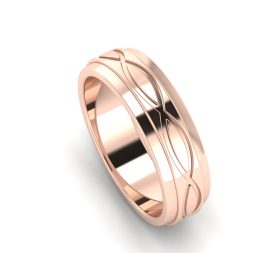
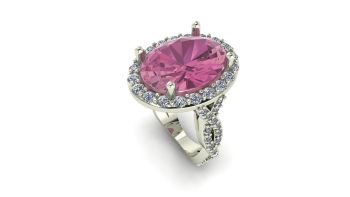
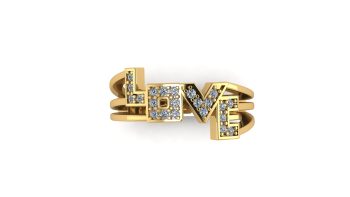
Jewelry Materials – Platinum & Palladium
Platinum and palladium are two jewelry materials commonly used in jewelry making. Platinum is a dense, durable metal with a beautiful silver-white color. It is known for its purity and resistance to tarnish, making it an excellent choice for jewelry that will last a lifetime. Palladium, on the other hand, is a lighter metal with a similar appearance to platinum. It is less expensive than platinum, making it a more affordable option for those looking for a high-quality metal.
When it comes to the pros of using platinum and palladium in jewelry making, there are several key advantages. First, both metals are hypoallergenic, making them ideal for those with sensitive skin. They are also extremely durable, meaning that jewelry made from these metals will stand the test of time. Additionally, platinum and palladium have a natural white color, which means that they do not require any additional plating or treatments to maintain their appearance.
However, there are also some cons to consider when using platinum and palladium in jewelry making. The main drawback is the cost. Platinum is one of the most expensive metals, making it a luxury option that may not be within everyone’s budget. Palladium, while more affordable than platinum, is still pricier than other metals commonly used in jewelry making. Another consideration is the weight of these metals. Platinum and palladium are denser than other metals, which means that jewelry made from them will be heavier on the wearer.
Basically, platinum and palladium are excellent choices for jewelry making due to their durability, hypoallergenic properties, and natural white color. While they may come with a higher price tag and be heavier than other metals, the quality and longevity they offer make them worth considering for those looking for a timeless piece of jewelry.
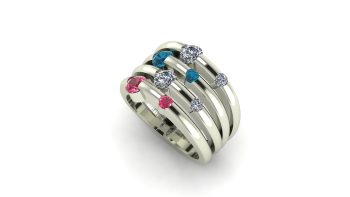
Copper & Bronze – Jewelry Materials
Copper & Bronze are Jewelry Materials we don’t use very often. They are kind of niche metals.
Copper is a reddish-brown metal, while bronze is a combination of copper and tin. Both metals have their own unique characteristics and advantages when it comes to creating beautiful jewelry pieces.
One of the main benefits of using copper in jewelry making is its affordability. Copper is a relatively inexpensive metal, making it a great choice for those on a budget. Additionally, copper has a warm and rich color that adds a unique touch to any piece of jewelry. It can be easily shaped and textured, allowing for endless design possibilities.
Bronze, on the other hand, offers a more durable option for jewelry making. The addition of tin to copper creates a stronger metal that is less prone to damage and wear. This makes bronze a great choice for pieces that will be worn frequently, such as rings or bracelets. Bronze also has a beautiful golden hue, which adds a touch of elegance to any jewelry design.
However, there are also some drawbacks to using copper and bronze as jewelry materials. One of the main cons is that both metals can tarnish over time. This means that jewelry made from copper or bronze may require regular cleaning and maintenance to keep its shine. Additionally, some people may have allergies or sensitivities to these metals, which can cause skin irritation.
Things To Consider When Choosing Jewelry Materials
When choosing jewelry materials, there are several factors to consider. First and foremost, you should think about your personal style and preferences. Do you prefer a more classic and timeless look, or are you drawn to trendy and unique designs? This will help you determine which metals will best suit your taste.
Another important consideration is the durability and longevity of the jewelry materials you are considering. Some metals, like gold and platinum, are known for their durability and resistance to tarnish. Others, like silver and copper, may require more maintenance to keep them looking their best. Think about how often you plan to wear your jewelry and how much care you are willing to put into maintaining it.
Last, budget is a crucial factor to consider. Different metals come with different price tags, so it’s important to set a realistic budget before making a decision. Keep in mind that while gold and platinum may be more expensive upfront, they are also more likely to retain their value over time.
Looking For Custom Jewelry?
We create custom jewelry made to order. That is all we do. Why buy a mass produced piece of jewelry from a chain store that 1000’s of people can have? We can create something showing your style and personality. And many times, for less than a comparable piece from the bog box stores.You can view our portfolio of custom engagement rings or custom pendants to look for ideas. Or you can contact us with your own idea.

